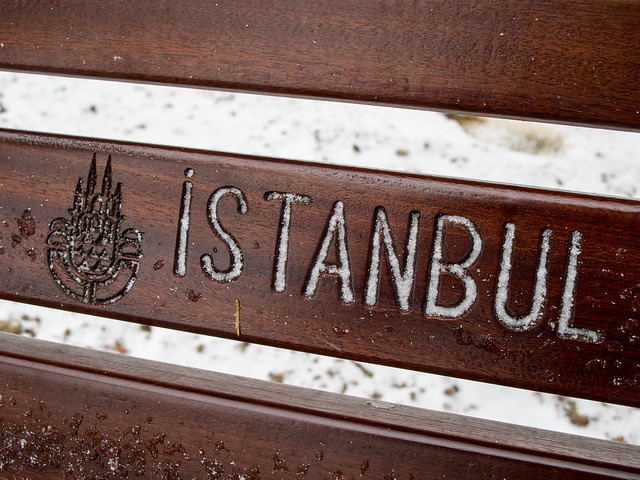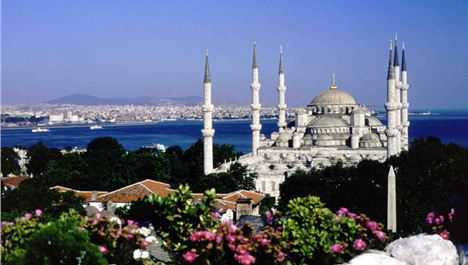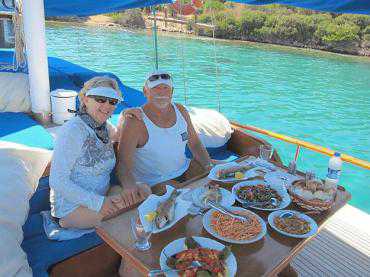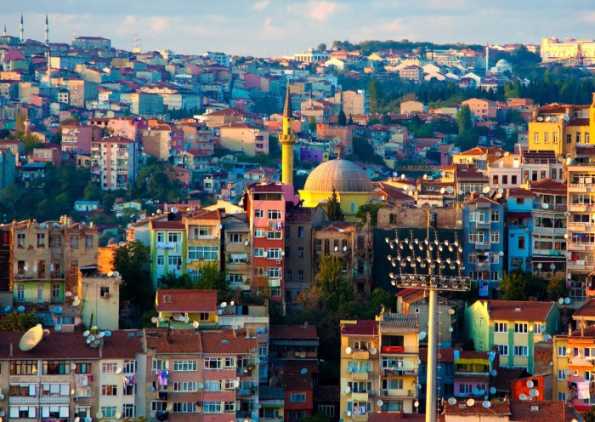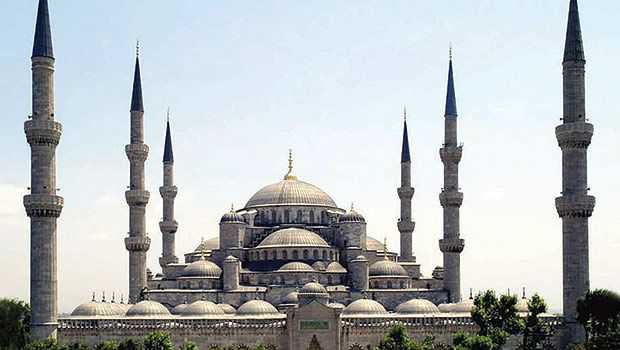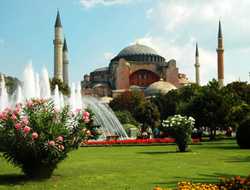by Alex Berger on March 19, 2012
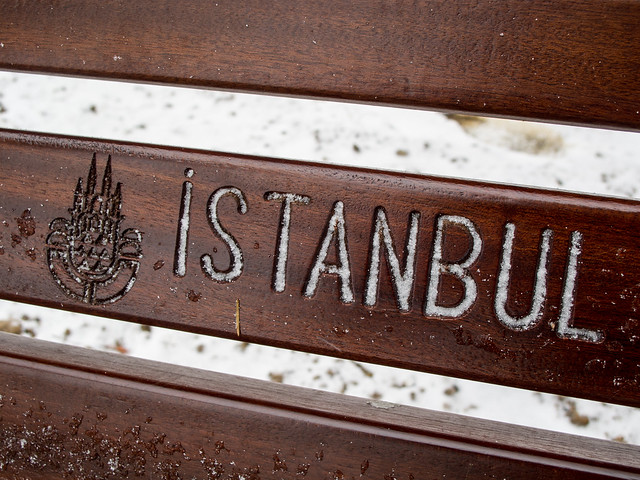
When I chose Turkey as the destination for my holiday trip, one key factor was weather. While I still didn’t expect it to be terribly warm, I was hopeful that the weather would be notably warmer than what I had grown accustomed to in Copenhagen, Denmark. Little did I know what I was in for: the coldest weather Turkey has experienced in over 25 years. After diving into my bags and layering on just about every piece of warm clothing I had, I quickly set out to explore the historic district of Sultanahmet which immediately surrounds the Sultan Ahmed Mosque, more commonly known as the Blue Mosque. I have to confess that I was more than a little frustrated by the cold and snow flurries which made visibility difficult. Still, I decided to take stock of my situation and make the absolute best of it – after all, when was the last time you saw photos of Istanbul covered in snow? Eager to take care of this rare occurrence, I began to explore the neighborhood..

The trip was my first to a Muslim country. It was also my first to an arab-influenced country. I say arab-influenced country because I know that many Turks don’t consider themselves to be arabs and are regularly frustrated by the mis-association. As I crunched out into the snow the first time I honestly had no idea what to expect. I had heard that Turkey was much more liberal, western and progressive than many of the more traditionalist/conservative Muslim countries, but I had no idea just where the boundaries between the two might fall. Would I see lots of women covered from head to toe in traditional garb? Would beer and alcohol be available – or even legal? What about pork? Would people pause during prayer periods to pray in the streets? Some of these unknowns no doubt seem silly to some of you, especially some of my Turkish friends who have known me for years. For others, I imagine you likely share the uncertainty I did before my arrival in Turkey.

What I found was a city full of surprises. While there were some women in full-body traditional conservative outfits, most wore a headscarf, or nothing particularly unusual – choosing instead to dress as one would find and expect anywhere else in the world. In truth, there are probably more women dressed traditionally in the heavily-Arab district of Norrebro back in Copenhagen than there are in the Sultanahmet district of Istanbul. In part, that’s due to the tourist-centric nature of that part of town. Mostly, however, it is indicative of exactly what you would expect in any major metropolitan area. Similarly, despite the loud sing-song of the Muslim call to prayer echoing through the city several times a day, I never saw anyone pause to pray in public. In truth, few Turks even paused as they went about their business. Should I be surprised? Probably not. Was I? Most definitely.
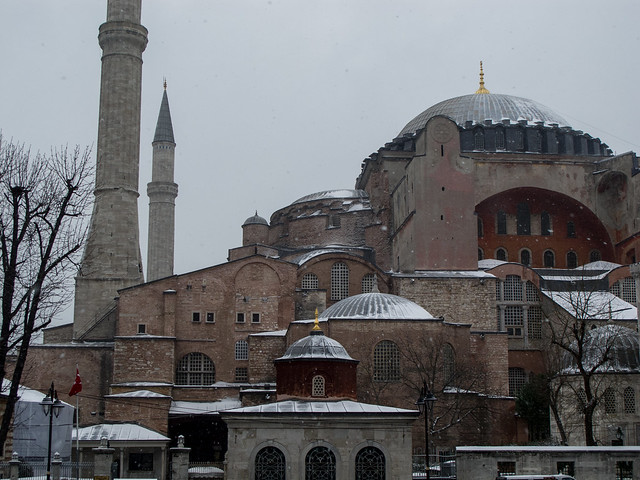
As my time in Istanbul quickly raced by I came to realize just how far off most of my perceptions about Turkey had been. During our visits to the Taksim area, which is a shopping sector and bar district within Istanbul, I quickly learned that Istanbul has a thriving bar and nightlife scene. While drinks are relatively expensive, they’re easily on hand in most parts of the city (though perhaps slightly more difficult to find than some other major cities). Perhaps most surprising was that there even seemed to be unofficial open container laws, as long as you were careful and remained within Taksim. The city was not at all what I expected or what many of the westernized portrayals of Turkey depicted. Heck, to our total surprise (and dismay) several fellow hostelers and I actually stumbled into (and right out of) what we thought was a bar which ended up being a brothel – located right in the heart of Taksim.

Now, all of this isn’t to say that Istanbul doesn’t have its conservative districts and idiosyncrasies. It does, but it’s also nothing like the city I was expecting. Another aspect that took me by complete surprise was the city’s size. A review of online literature about Istanbul in preparation for my trip left me expecting a mid-sized capital city with a hearty population in the 10-12 million range. What I found was a city that locals claim has at least 19 million residents and, given the population density and size of the city, I believe it. This, and other experiences during the trip led me to realize that Istanbul is one of the world’s great cities and it is not discussed as such as often as it should be.

More than that, it possesses a charm that few cities of its size and scale are able to nurture or retain. Istanbul is a city of empire. A city of history. Of wonder. With its well-manicured boulevards and crumbling historic districts, Istanbul befits a city that straddles two continents – two worlds – that has served as the sentry of the Bosphorus for thousands of years. Despite spending more than a week in Istanbul, I feel as though I’ve only just scratched the surface. There are still so many historical buildings, museums, and remnants of the past to explore. But, it goes far beyond that. The foods, music, cafes, and cultures of Istanbul are also intoxicating, rich, and complex. I’ll find my way back to Istanbul as soon as the chance permits and as someone who isn’t generally a fan of mega-cities, that is a take away from the city that I found extremely surprising. If you find yourself considering a visit to Istanbul – don’t be mislead by headlines, silly stereotypes and hear-say. If you haven’t considered Istanbul and Turkey as a destination in the past – I hope my series on the country will help inspire you to add it to your list and to consider it seriously. After all, Istanbul is the city of Byzantium and Constantinople – a city that demands every traveler’s attention!


